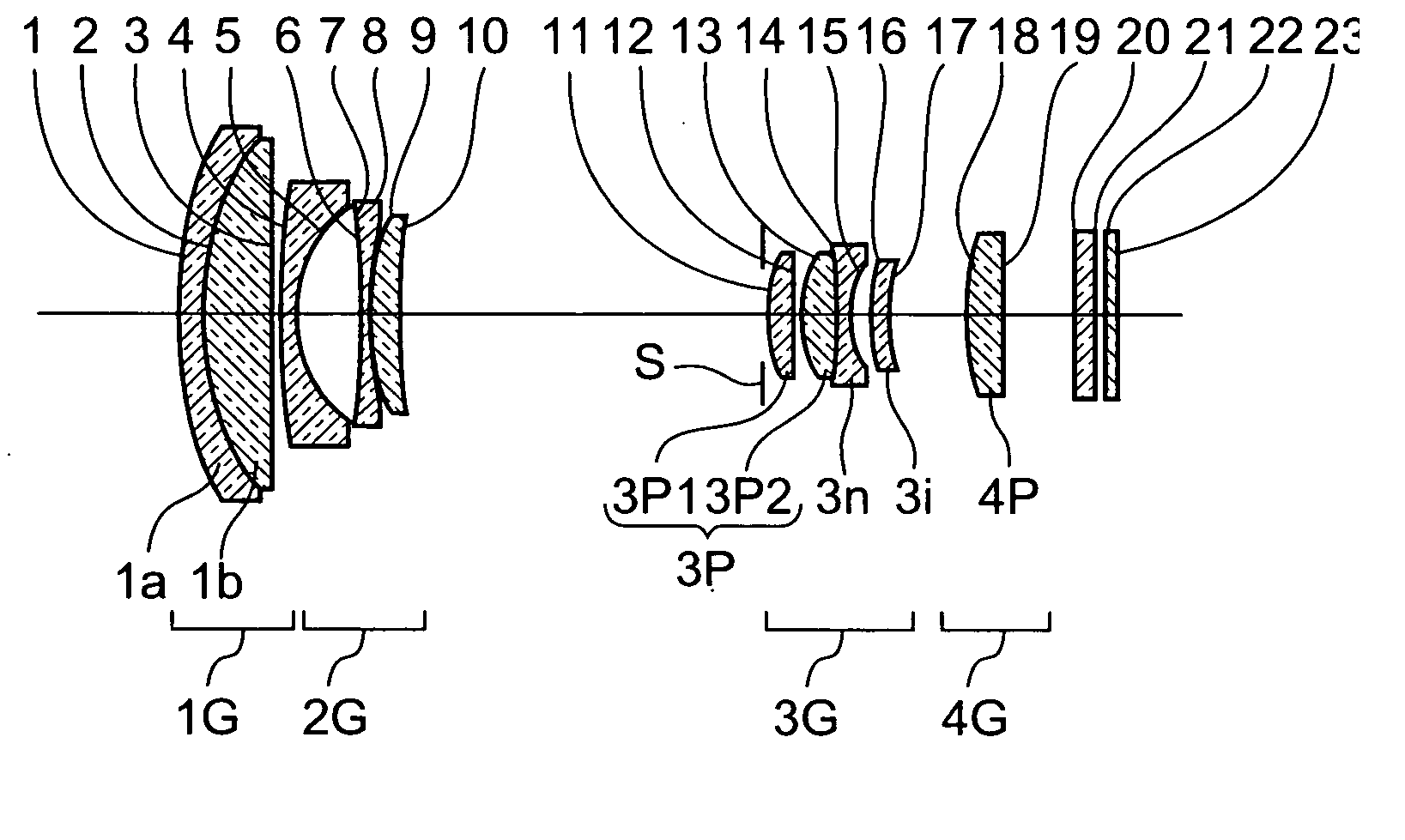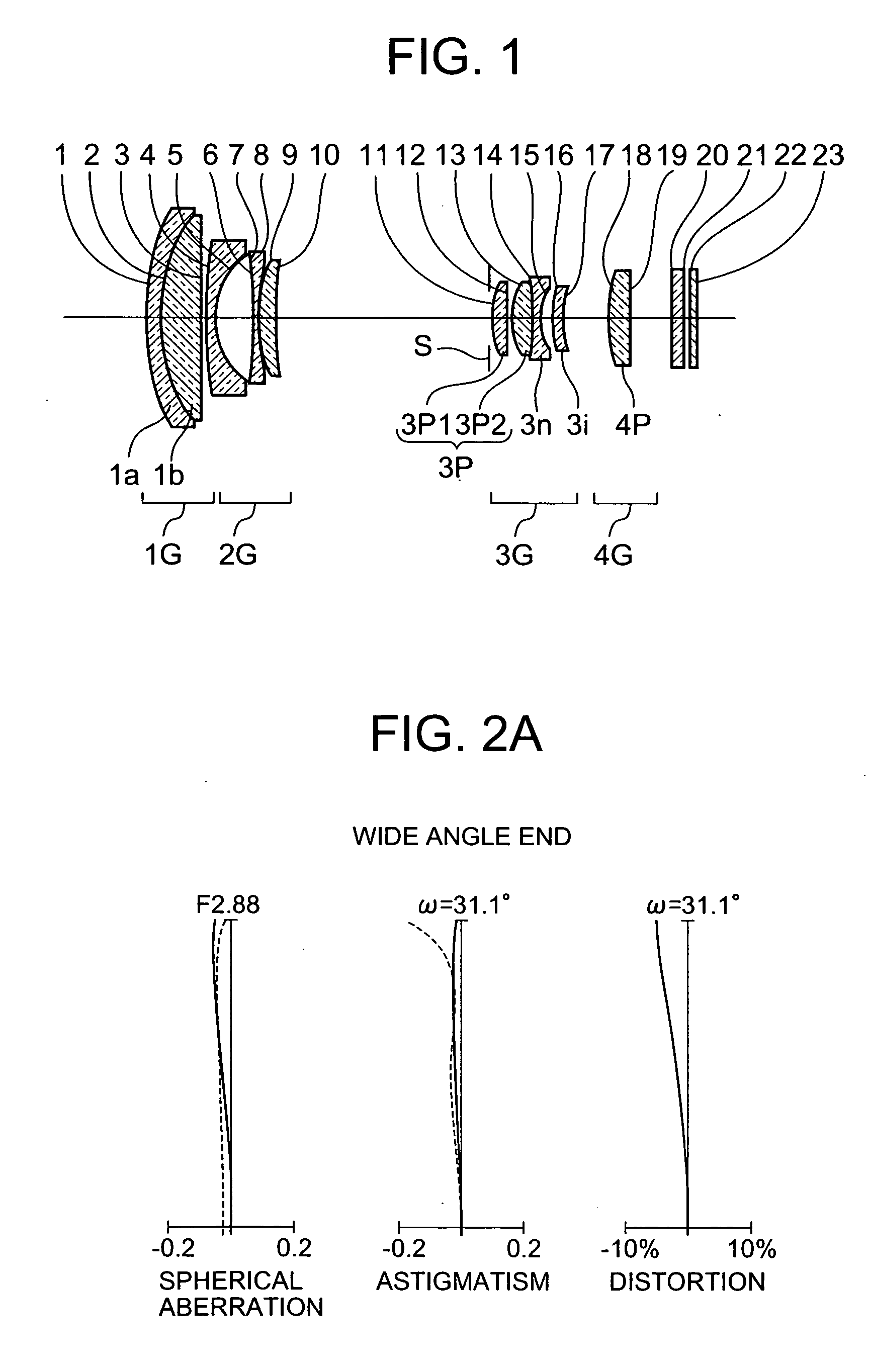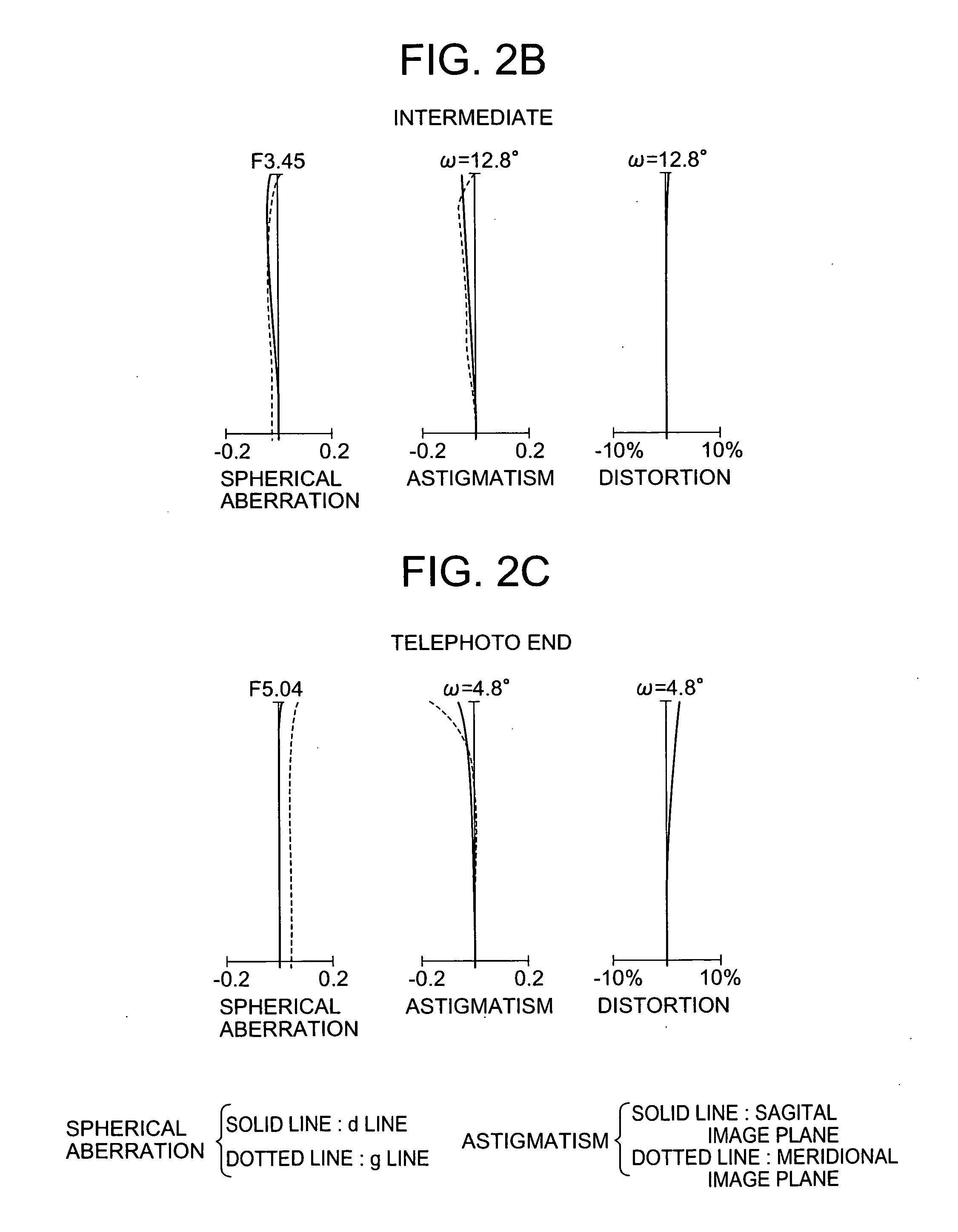Zoom lens
a zoom lens and lens body technology, applied in the field of zoom lenses, can solve the problems of difficulty in achieving size and cost reductions, and achieve the effects of suppressing an increase in the thickness of the lens, expanding the range of glass materials, and increasing the correction effect of aberrations
- Summary
- Abstract
- Description
- Claims
- Application Information
AI Technical Summary
Benefits of technology
Problems solved by technology
Method used
Image
Examples
first embodiment
[0110] The first embodiment is associated with aspects (1) to (37). FIG. 1 is a sectional view of a zoom lens according to the first embodiment. Referring to FIG. 1, the zoom lens is a four group lens including positive, negative, positive, and positive lens groups arranged from the object side. A first lens group 1G includes a negative lens 1a and positive lens 1b. A third lens group 3G includes a lens 3p1, lens 3p2, lens 3n, and lens 3i. A fourth lens group 4G includes a lens 4p. An aperture stop S is placed in the air gap between a second lens group 2G and the third lens group 3G. When the magnification is to be changed from the wide angle end to the telephoto end, the first lens group 1G and third lens group 3G integrally move. Tables 1 and 2 show lens data.
[0111] Note that the sixth to eighth surfaces in the second lens group 2G constitute a hybrid aspherical lens, the lens 3i (16th and 17th surfaces) in the third lens group 3G is a plastic aspherical lens, and the lens 4p (18...
second embodiment
[0114] The second embodiment is associated with aspects (1) to (37). FIG. 3 is a sectional view of a zoom lens according to the second embodiment. Referring to FIG. 3, the zoom lens is a four group lens including positive, negative, positive, and positive lens groups arranged from the object side. A first lens group 1G includes a negative lens 1a and positive lens 1b. A third lens group 3G includes a lens 3p1, lens 3p2, lens 3n, and lens 3i. A fourth lens group 4G includes a lens 4p.
[0115] An aperture stop S is placed in the air gap between a second lens group 2G and the third lens group 3G. When the magnification is to be changed from the wide angle end to the telephoto end, the first lens group 1G and third lens group 3G integrally move.
[0116] Note that the sixth to eighth surfaces in the second lens group 2G constitute a hybrid aspherical lens, the lens 3i (16th and 17th surfaces) in the third lens group 3G is a plastic aspherical lens, and the lens 4p (18th and 19th surfaces) ...
third embodiment
[0120] The third embodiment is associated with aspects (1) to (33) and (35) to (37). FIG. 5 is a sectional view of a zoom lens according to the third embodiment. Referring to FIG. 5, the zoom lens is a four group lens including positive, negative, positive, and positive lens groups arranged from the object side. A first lens group 1G includes a negative lens 1a and positive lens 1b. A third lens group 3G includes a lens 3p1, lens 3p2, lens 3n, and lens 3i. A fourth lens group 4G includes a lens 4p. An aperture stop S is placed in the air gap between a second lens group 2G and the third lens group 3G. When the magnification is to be changed from the wide angle end to the telephoto end, the first lens group 1G and third lens group 3G move. The second lens group G2 moves in the optical axis direction so as to increase the gap between the first lens group 1G and the second lens group 2G and decrease the gap between the second lens group 2G and the third lens group 3G.
[0121] Note that t...
PUM
 Login to View More
Login to View More Abstract
Description
Claims
Application Information
 Login to View More
Login to View More - R&D
- Intellectual Property
- Life Sciences
- Materials
- Tech Scout
- Unparalleled Data Quality
- Higher Quality Content
- 60% Fewer Hallucinations
Browse by: Latest US Patents, China's latest patents, Technical Efficacy Thesaurus, Application Domain, Technology Topic, Popular Technical Reports.
© 2025 PatSnap. All rights reserved.Legal|Privacy policy|Modern Slavery Act Transparency Statement|Sitemap|About US| Contact US: help@patsnap.com



